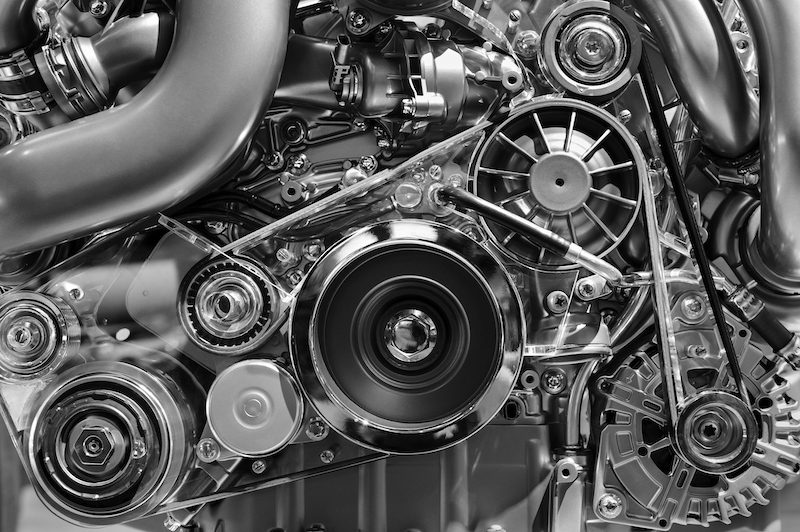Leading Tips for Inspecting Used Engines for Sale Before Making a Purchase
Leading Tips for Inspecting Used Engines for Sale Before Making a Purchase
Blog Article
Vital Factors To Consider for Guaranteeing High Quality and Long Life in operation Engines
When considering the purchase of an utilized engine, guaranteeing its high quality and durability calls for a multifaceted method. Upkeep background is a pivotal aspect, as it supplies understanding right into the engine's previous care and prospective future dependability. Beyond documents, a detailed examination of physical components-- such as belts, pipes, and seals-- can disclose concealed problems. Performance testing is likewise essential, offering a snapshot of the engine's functional performance. Recognizing the nuances of these assessments and their ramifications can be complicated. What are the crucial approaches that can be used to navigate this complex examination process properly?
Engine History Evaluation
In the world of utilized engines, a complete engine history analysis is vital to guaranteeing quality and integrity. Comprehending an engine's past can provide crucial understandings right into its efficiency abilities and possible future durability. A precise history review includes a number of vital facets that play a considerable function in analyzing an engine's problem. First of all, maintenance documents are vital. Normal upkeep, consisting of oil modifications, filter substitutes, and arranged tune-ups, suggest that the engine has been well-cared-for, lowering the probability of unforeseen failures.
Engines that have undertaken considerable repair work may have underlying issues that might resurface. Analyzing the engine's mileage can offer as a sign of wear and tear. An engine made use of mostly for long-distance highway driving might be in much better problem than one subjected to regular stop-and-go city traffic.
Essentially, an extensive investigation right into an engine's history is vital for making educated buying decisions. used engines for sale.
Comprehensive Inspection Overview
While comprehending an engine's history offers valuable context, a comprehensive examination is the next action to ensure its existing condition straightens with historic data. The examination must begin with a visual analysis, looking for signs of leakages, deterioration, and unusual wear. Examine the outside for oil spots or coolant marks, which might indicate underlying concerns.
Following, assess the engine's installing system for any kind of loose bolts or problems that could impact efficiency. Pay very close attention to the condition of belts and pipes, as these components are vital for optimum engine performance. Check out for fractures, fraying, or any kind of indications of wear and tear.

Identifying Put On and Tear
Identifying indicators of damage is crucial for assessing an utilized engine's durability and dependability. It includes a precise assessment of various engine parts to determine their present state and potential future performance. Common indicators consist of noticeable corrosion, which can influence metal parts and compromise structural stability. Rust on or around the engine block, cyndrical tube heads, and exhaust manifolds is especially worrying.
One more essential aspect is examining the engine's seals and gaskets. In addition, abnormal noises throughout engine procedure, such as knocking or ticking sounds, might indicate interior damages or too much wear on moving parts like pistons or bearings.
The condition of belts and tubes is equally essential, as they play an essential function in the engine's general feature. Fractured or frayed belts and breakable hose pipes are signs of aging that could lead to engine failure if neglected. Finally, taking a look at the oil condition and filter can supply understandings into previous upkeep techniques, as unclean oil or clogged filters recommend overlook and sped up wear.
Efficiency Screening Basics
Evaluating the wear and tear of engine elements establishes the stage for an extensive evaluation with efficiency screening. Efficiency screening offers as a crucial step in figuring out the operational honesty of an utilized engine.
Using dynamometers is a common approach in performance screening. These tools measure the engine's outcome throughout various conditions, supplying a thorough profile of its functionality. In addition, on-road testing enhances dynamometer evaluations by observing engine habits under normal driving situations, guaranteeing it satisfies the called for requirements for both security and performance.
These tools analyze engine monitoring systems, click here to find out more recognizing mistakes in digital components that could influence performance. Comprehensive testing not just validates the engine's functional standing however additionally help in this post projecting future upkeep requirements.
Maintenance and Care Tips
Proper maintenance and care are vital to extending the life expectancy of an utilized engine and ensuring its consistent performance. Normal oil adjustments are extremely important; making use of the supplier's advised oil kind and grade can prevent too much damage. In addition, oil filters need to be changed simultaneously to preserve optimal lubrication and cleanliness within the engine.
Checking liquid levels, including coolant, transmission fluid, and brake fluid, is essential. Guaranteeing these liquids go to ideal degrees helps avoid overheating and other mechanical issues. Inspecting belts and tubes for indications of wear, such as cracks or fraying, can avoid prospective failures that might result in pricey repair services.
Routine examination of the air filter is likewise necessary, as a tidy filter makes sure efficient air movement and combustion, thereby maximizing engine performance. Trigger plugs need to be inspected and replaced when needed to preserve efficient gas combustion and prevent engine misfires.
Last but not least, routine analysis checks using specialist tools can determine possible issues before they come to be considerable troubles. By adhering to these upkeep and treatment suggestions, used engine owners can ensure their engines stay reputable, reliable, and efficient in carrying out more than an extensive duration.
Conclusion

Report this page